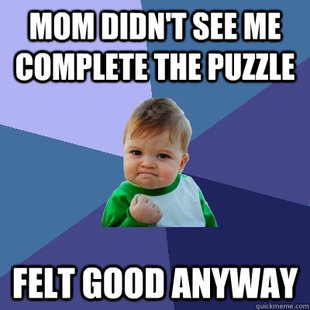Since I've been sharing most of my what I've produced since
I started drawing again, I'm going to continue doing so now.
I say this with some reluctance because, frankly, I don't think these pictures came out as good as some of the others--at least not
after having them scanned and seeing how little of the shading came out.
Anyway, it's not the fault of my tools entirely. I still have a lot to improve and even if the scans reproduced perfectly what's on paper there's still a good bit to criticize.
Just last night, in fact, I was looking through a book called
The Artist's Guide to Drawing the Head to see if I should buy it. I discovered a few things there. Namely:
1. I don't even know how to hold a pencil yet.
2. I need to learn how to shade better so that whatever I'm drawing looks more realistic.
3. I could probably double the quality of what I'm producing by reading a few good books.
Having just finished a 26-book reading project, however, I'm reluctant to jump into another one so soon. Better to keep at it, drawing a little each day, and noticing something I did well or something I did not so well.
So what in the world
have I been drawing these days?
Do I have any more feet for you?
The truth is I have no more feet--none drawn anyway.
But I do have some heads.
You cool with heads? Here's one of 'em:
That's me of course. Or at least it's a quick drawing of yours truly.
Here's another drawing of a much prettier face:
That of course is Lily Collins, who I know just from being addicted to
Cover Junkie and seeing her on a cover. If I had known she was in a movie with that kid from Twilight I probably would've drawn someone else.
Anyway, speaking of movies, one of the things that I didn't like about some of my drawings to date is that they're just sort of
drawings. They don't capture "a moment"--just "an image."
But I could fix that rather easily, by drawing a scene or two from my favorite television series,
Dae Jang Geum (which you can read
an excellent review of at
TOS).
So that's what I did. I drew this image, of when Jang Geum wants to get in the school training the palace cooks:
I don't know about you, but I've had moments like this--when everyone else is doing what I want and the doors are closing on that opportunity (seemingly forever).
With art, for example, this summer many people are going to be studying at
The Grand Central Academy of Art. The artists who are doing that this year are, for me, like the girls in this drawing--and there I am on the outside, watching them learn to do what I want to do.
Now, however amateur the drawing is, it does capture that moment, and in so doing allows me to relate what I'm going through now with what Jang Geum did (in the series).
In many ways, then, I like this drawing better than a higher-quality, expertly-done drawing of something that says nothing (or next to nothing).
The above drawing wasn't all I drew from
Dae Jang Geum though. I drew one more scene as well, to improve on my ability to draw a portrait. Here it is:
For those who haven't seen
the series, this will just appear to be a Korean girl smiling.
Well, hopefully it'll seem to be a girl, who is from Korea, and who is smiling.
But for those who
have seen the series, it's more likely to be seen as the culmination of Jang Geum's efforts during the time that she was on the outside looking in.
In this way, for me, it's something more than a simple portrait. It's a portrait-with-a-message, for example: to keep trying, to study yourself when others are studying in school, and to enjoy the moment when that studying pays off.
It's a good message, and one that could perhaps offer motivation to those who need it.
I'm not terribly in need of motivation to draw right now, however.
In fact, this drawing thing is starting to pull me in more and more and to tell you a little secret, I'm actually starting to like the smell of graphite in the morning.
Stay tuned to see how this all turns out.
Update:
There are four posts on this same topic now. If you're interested in reading them all, check out the following links.
1. How I Started Drawing Again
2. How That Drawing Thing is Going
3. I'm Starting to Like the Smell of Graphite in the Morning
4. 50 Shades of Graphite




























